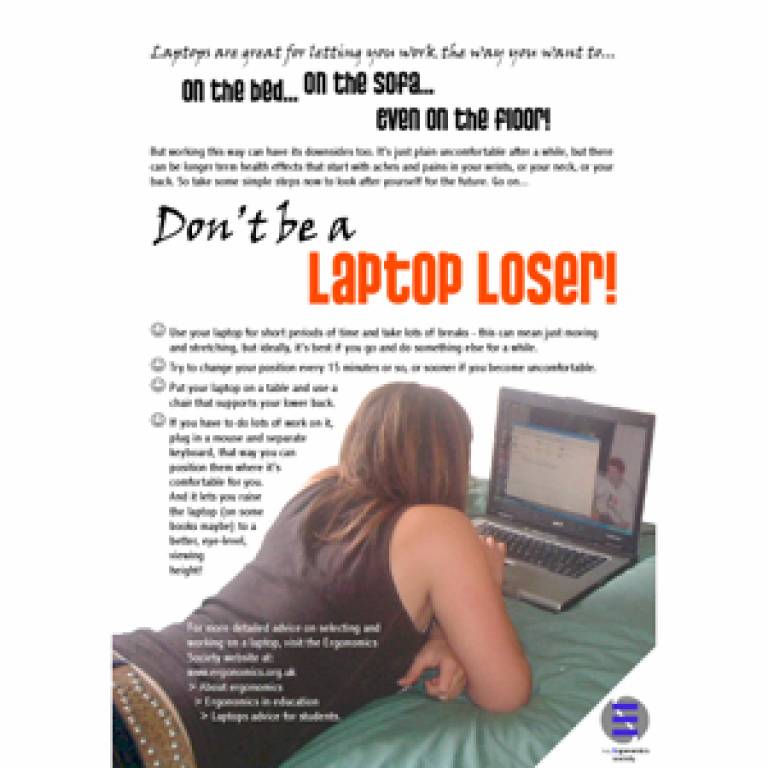Laptops can be a pain in the neck
25 September 2007
Links:
 uclic.ucl.ac.uk/people/r.benedyk/laptops.pdf" target="_self">Laptops: Ergonomic Advice for Students
uclic.ucl.ac.uk/people/r.benedyk/laptops.pdf" target="_self">Laptops: Ergonomic Advice for Students
Ergonomist Rachel Benedyk (UCL Interaction Centre) is encouraging students to take precautions to avoid aches and pains while using laptops.
Dr Benedyk and The Ergonomics Society have produced leaflets and posters entitled 'Don't be a laptop loser' for distribution to students, which highlight the dangers of poor posture and lengthy laptop usage.
Research carried out by Dr Benedyk and her team - sponsored by the Stephen Pheasant Memorial Trust - discovered that 57 per cent of respondents to their student survey had experienced aches & pains as a result of their laptop use, with an overwhelming majority unaware of ergonomic guidance on using laptops.
649 undergraduate and postgraduate students from a range of nationalities completed the set of survey questions. 166 teaching staff responded to a separate online survey. The most prevalent aches and pains were in the neck (21 per cent), shoulders (21 per cent), wrists (16 per cent), back (15 per cent) and eyes (11 per cent).
The UK's Display Screen Equipment Regulations recommend limited use of laptops because their design imposes postural strain, heat emissions and high visual load, made worse by the fact that people often use them in inappropriate positions.
Many survey respondents admitted to having frequently positioned their laptop on their laps (42 per cent), in bed (29 per cent) and on the floor (13 per cent).
Dr Benedyk said: "Increasingly, students are bringing their own laptops to university. On average, these students are using their laptops for almost five and a half hours a day. This length of time would be considered extensive in a risk assessment. University students use their laptops quite differently from school pupils; they want the portability and flexibility of a laptop, but they use them highly intensively in a complex and variable environment. We have shown that this raises ergonomic risks. We are currently seeking funding to extend and develop our research in this area".
Among the recommendations, Dr Benedyk emphasises that the laptop should be positioned centrally to the body to avoid straining and glare, and supported by a table at a reasonable height. Students using laptops should ensure their chair gives them good back support and should take frequent breaks. And despite its name, they should never use a laptop on their lap!
To find out more, use the links at the top of this article.
Image: 'Don't be a laptop loser' poster produced by The Ergonomics Society in collaboration with Dr Benedyk
 Close
Close

